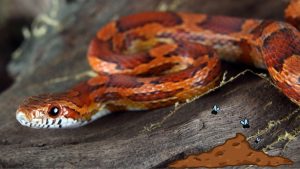If you’re a bearded dragon owner, you may be interested in incubating your bearded dragon’s eggs. Incubating bearded dragon eggs can be a rewarding experience, but it requires some preparation and knowledge. In this article, we’ll cover the basics of how to incubate bearded dragon eggs, from preparing to collect the eggs to hatching them successfully.
Before we begin, it’s important to note that incubating bearded dragon eggs can be a delicate process. It requires careful attention to temperature and humidity levels, as well as proper handling of the eggs. However, with the right tools and knowledge, you can successfully incubate your bearded dragon’s eggs and watch as they hatch into adorable baby dragons. So let’s get started!
Key Takeaways
- Incubating bearded dragon eggs requires careful attention to temperature and humidity levels.
- Proper handling of the eggs is crucial for successful incubation.
- With the right tools and knowledge, you can successfully incubate your bearded dragon’s eggs and watch as they hatch into adorable baby dragons.
Preparing to Incubate Bearded Dragon Eggs
When preparing to incubate bearded dragon eggs, there are a few things we need to consider. Creating an incubation box, choosing a substrate, and monitoring temperature and humidity are the three main things we need to focus on. Let’s take a closer look at each of these sub-sections.
Creating an Incubation Box
The first step in preparing to incubate bearded dragon eggs is to create an incubation box. This can be done by using a store-bought incubator or by making a DIY incubator. If you choose to make a DIY incubator, make sure to choose a container that is large enough to hold all of your eggs and has a tight-fitting lid to prevent moisture from escaping.
Choosing a Substrate
The substrate you choose is essential for successfully incubating bearded dragon eggs. Vermiculite and perlite are two popular options for substrates as they hold moisture well. When preparing the substrate, make sure to follow the instructions carefully and mix it with water until it reaches the desired consistency.
Monitoring Temperature and Humidity
Temperature and humidity are crucial factors in incubating bearded dragon eggs. The temperature should be kept between 80-85°F (26-29°C), and the humidity should be around 80%. It’s essential to use a hygrometer and thermometer to accurately monitor these levels. If the temperature or humidity levels are too high or too low, it can result in the eggs not hatching or developing deformities.
In conclusion, creating an incubation box, choosing a substrate, and monitoring temperature and humidity are the three main things we need to focus on when preparing to incubate bearded dragon eggs. By following these steps, we can increase the chances of successfully hatching healthy bearded dragon babies.
Collecting and Arranging Bearded Dragon Eggs
When it comes to incubating bearded dragon eggs, the first step is to collect the eggs and arrange them properly. Here’s how we do it:
Removing the Eggs
Once your female bearded dragon has laid her eggs, it’s important to remove them carefully. Gently dig around the eggs to loosen them from the substrate, and then use your fingers to lift them out. Be sure to handle the eggs as little as possible, and avoid rolling them.
Checking for Fertility
Before arranging the eggs, it’s a good idea to double-check for fertility. Infertile eggs will not hatch, so it’s best to remove them from the clutch. You can tell if an egg is fertile by shining a bright light through it. Look for veins and a dark spot, which indicate that the egg is developing. If you’re unsure, you can wait a few days and check again.
Arranging the Eggs
Once you’ve removed any infertile eggs, it’s time to arrange the clutch for incubation. We recommend using a container filled with a moist substrate like vermiculite or perlite. Arrange the eggs in a single layer, making sure they’re not touching. Be sure to label the container with the date and clutch number.
It’s important to keep the eggs in a warm, humid environment for incubation. You can use a homemade or store-bought incubator for this purpose. Make sure to monitor the temperature and humidity levels closely, as fluctuations can be harmful to the developing embryos.
In summary, collecting and arranging bearded dragon eggs is an important step in the incubation process. By removing any infertile eggs and arranging the clutch properly, you can increase the chances of a successful hatch. With proper care and attention, you can watch your bearded dragon eggs develop and hatch into healthy babies.
Incubating Bearded Dragon Eggs
When it comes to incubating bearded dragon eggs, there are a few things we need to keep in mind to ensure successful hatching. Here are the steps we need to follow:
Placing the Eggs in the Incubator
First, we need to place the eggs in the incubator. We should use a substrate that holds moisture well, like vermiculite or perlite, and make sure the temperature and humidity levels are optimal for hatching. We can use a DIY or store-bought incubator, but we should make sure it’s large enough to hold all of our eggs and has the necessary temperature and humidity controls.
Candling the Eggs
After a few days, we can candle the eggs to check if they are fertile. Candling involves shining a bright light through the egg to see if there is an embryo inside. If there is, we should see veins and a dark spot. If the egg is infertile, we won’t see any development inside.
Monitoring the Eggs
Once we know the eggs are fertile, we need to monitor them closely. We should check the temperature and humidity levels regularly and make sure they stay within the optimal range. We should also keep an eye out for any health issues that may arise, like mold growth or dehydration.
Dealing with Moldy Eggs
If we notice mold growth on any of the eggs, we should remove them immediately. Mold can spread quickly and harm the developing embryo. We should also check the humidity levels and make sure they’re not too high, as this can cause mold growth.
Overall, incubating bearded dragon eggs can be a rewarding experience, but it requires careful attention and monitoring. By following these steps, we can increase our chances of successfully hatching healthy bearded dragon babies.
Hatching Bearded Dragon Eggs
After patiently waiting for about 40-90 days, our bearded dragon eggs are finally ready to hatch! In this section, we will discuss how to prepare for hatchlings and assist them during the hatching process.
Preparing for Hatchlings
Before the bearded dragon eggs hatch, we need to prepare a few things to ensure the hatchlings’ safety and health. Here are some things we should do:
- Prepare a separate enclosure for the hatchlings: We should have a separate enclosure ready for the hatchlings. The enclosure should have a heat source, a UVB light, and a hiding spot where the hatchlings can feel secure.
- Check the temperature and humidity: We need to make sure that the temperature and humidity levels in the enclosure are appropriate for the hatchlings. The temperature should be around 85°F, and the humidity should be around 70%.
- Prepare food: Hatchlings need to be fed small insects, such as crickets and mealworms. We should have a supply of these insects ready for the hatchlings.
Assisting Hatchlings
When the bearded dragon eggs start hatching, we need to be careful not to disturb the process. However, sometimes hatchlings may need some assistance. Here are some things we can do to help:
- Provide a moist environment: If the hatchlings are having trouble breaking out of their eggshells, we can provide a moist environment by lightly misting the eggs. This can make it easier for the hatchlings to break out.
- Help with hatching: If a hatchling is having difficulty hatching, we can gently assist by carefully peeling away the shell. However, we should only do this if the hatchling has been trying to hatch for an extended period without success.
- Give them time: It is essential to give the hatchlings time to rest and recover after hatching. We should avoid handling them for the first few days and let them adjust to their new environment.
In conclusion, hatching bearded dragon eggs can be an exciting and rewarding experience. By preparing for hatchlings and assisting them during the hatching process, we can ensure their health and safety. Remember to be patient and let nature take its course.
Frequently Asked Questions
What temperature do you incubate bearded dragon eggs?
We recommend incubating bearded dragon eggs at a temperature of 80-85°F (27-29°C). It’s important to maintain a consistent temperature throughout the incubation period to ensure proper development of the eggs.
How to tell if bearded dragon eggs are fertile?
To determine if bearded dragon eggs are fertile, you can use a process called candling. This involves shining a bright light through the egg to see if there is any development inside. Fertile eggs will show signs of development, such as veins or movement, while infertile eggs will appear clear.
What to do with unfertilized bearded dragon eggs?
If you have unfertilized bearded dragon eggs, you should dispose of them properly. Do not attempt to incubate them as they will not hatch. You can bury them in a safe location or dispose of them in the trash.
Bearded dragon egg incubation humidity?
Maintaining proper humidity during bearded dragon egg incubation is crucial for healthy development. We recommend keeping the humidity at around 75%. You can achieve this by adding water to the incubation substrate and monitoring it closely.
How to tell if bearded dragon eggs are dead?
If bearded dragon eggs are not developing properly, they may be dead. Signs of a dead egg include a foul odor or discoloration. You can also use candling to check for signs of development. If there are no signs of development after several weeks, the egg may be dead.
How long does it take to incubate bearded dragon eggs?
Bearded dragon eggs typically take between 40-90 days to hatch, depending on the temperature and other incubation conditions. It’s important to be patient and monitor the eggs closely during this time to ensure proper development.
Author
-

Lawrence, the founder of Pet Ploy, established the website in mid-2023. With a lifelong love for pets, Lawrence has been surrounded by a variety of animals since his early years. From dogs and cats to guinea pigs, rabbits, fish, and more, he has experienced the joy of caring for a diverse range of pets. Drawing from his deep-rooted passion, Lawrence created Pet Ploy to share his knowledge and enthusiasm with fellow pet enthusiasts. Through the platform, he aims to provide valuable insights, tips, and resources to promote the well-being and happiness of pets everywhere.












One Response